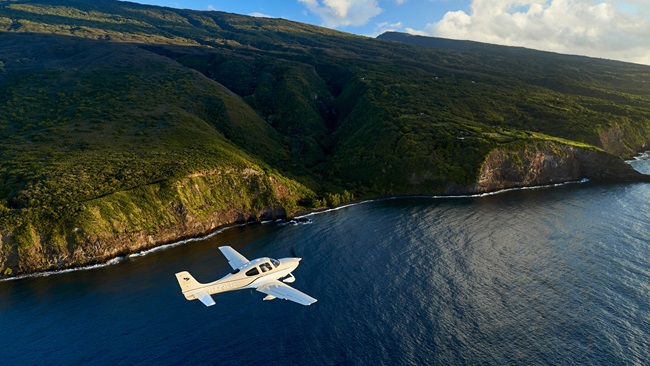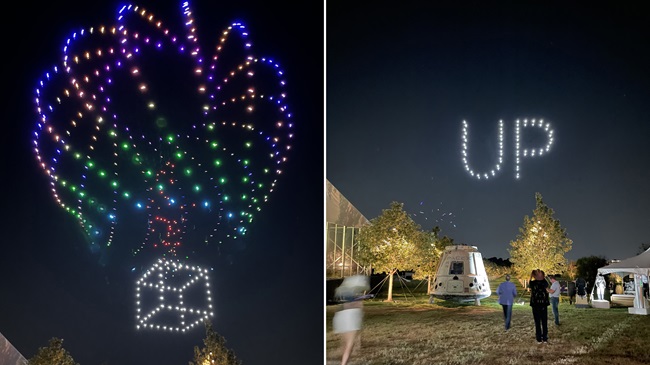Weaponized drones prompt flight restrictions
The Statue of Liberty, Hoover Dam, and Mount Rushmore are among 10 popular landmarks and attractions ruled off-limits to drones effective Oct. 5. The FAA imposed the new restrictions citing a request by “national security and law enforcement agencies.”
Wray told a U.S. Senate committee on Sept. 27 that consumer drones in the hands of terrorists are “quite difficult to disrupt and monitor,” a statement supported both by the growing toll of attacks in Iraq, Syria, and Ukraine, along with the results of a recent drone interdiction contest hosted by the Pentagon in New Mexico.
The New York Times reported that contractors brought lasers, nets, and other anti-drone systems to the “Hard Kill Challenge,” describing the Department of Defense event as a “counter-drone bake-off” that drew "nearly a dozen" competitors. The competition, held in the White Sands Missile Range, demonstrated that anti-drone technology has not yet caught up with readily available, off-the-shelf systems now being used in growing numbers by the Islamic State, and possibly others. Officials in Ukraine have blamed drones for the destruction of two huge weapons stockpiles, causing massive explosions that caused injuries, prompted evacuations, and disrupted air traffic, citing evidence collected from repeated attacks dating to 2015.
“There is a community of experts that has emerged inside the federal government who is focused on this pretty full-time,” said Nicholas Rasmussen, director of the National Counterterrorism Center, who testified during the same Senate hearing and echoed Wray’s grim assessment of the threat posed by consumer drones fitted with toxic or explosive payloads. “A year ago, this was an emerging problem. Now, it’s a real problem.”
The threats overseas and resulting homeland drone restrictions come at a time when advocates, regulators, pilots, and other stakeholders are wrangling over how best to safely integrate unmanned aircraft. AOPA is a member of the FAA Drone Advisory Committee, along with various subcommittees and task groups, as well as the Unmanned Aircraft Safety Team. As FAA Administrator Michael Huerta remarked earlier this year, the anonymity of drones remains a security concern that has delayed implementation of relaxed restrictions that would allow unmanned aircraft flights over people and beyond line of sight.
More recently, a collision between a small quadcopter and a U.S. Army Black Hawk helicopter patrolling over Staten Island to protect the United Nations General Assembly offered a tangible example of the risk posed by unarmed civilian drones flown irresponsibly. The collision reportedly took place while the helicopter was flying at 500 feet, higher than commercial drone operators are allowed, though recreational users are not strictly prohibited from flying at that altitude, provided they do not interfere with manned aircraft operations, which this drone certainly did. The helicopter landed safely, but the damaged main rotor had to be replaced, Army officials said. Authorities have not yet announced the identification of the drone pilot or the reason for the operation, but the NTSB is investigating.
AOPA Director of Regulatory Affairs Justin Barkowski said that public safety concerns surrounding UAS operations have complicated efforts to integrate drones into the National Airspace System and expand commercial drone operations to include flights over people and beyond line of sight. To address those concerns, AOPA is a member of the UAS Identification and Tracking Aviation Rulemaking Committee (ARC), which is developing recommendations on the identification and tracking of drone operations. The ARC is scheduled to submit recommendations to the FAA by October.
“We have had some productive discussions, and progress is being made, but issues remain to be resolved,” Barkowski said. “We do understand that the current regulatory scheme is holding back efforts to expand operations on the commercial side of the industry, but the safety of the public and the National Airspace System remain paramount.”
The FAA noted in its Sept. 28 announcement that further restrictions on drone flight may follow based on ongoing evaluation of additional requests received from other agencies. The FAA previously restricted drone flights over military bases, though the restrictions coordinated with the Department of the Interior were the first involving non-military facilities.




